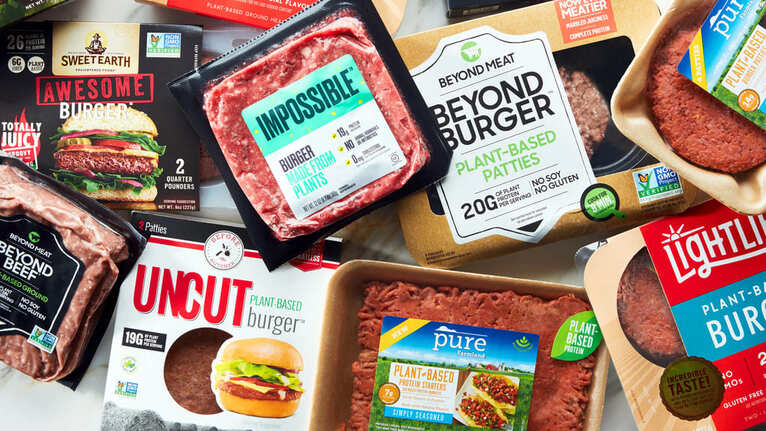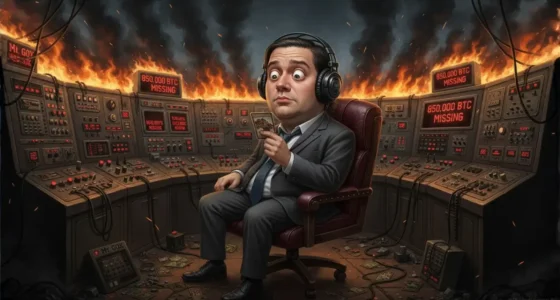The Burger That Started Everything

You could say it all began with a burger. However, this wasn’t the greasy,flame-broiled kind. Instead, it was a patty that bled beet juice. Moreover, it hissed like meat when it touched the grill.
Notably, it wasn’t made in a slaughterhouse. Rather, scientists created it in a lab. And for a brief moment, it looked like the future.
In the late 2010s, headlines everywhere promised a food revolution. Specifically, synthetic meat startups claimed they would change everything. Whether plant-based imitations or lab-grown
cells, these products were supposed to end factory farming. Additionally, they promised to save the planet. Best of all, they would still taste just like real meat.
Consequently, billionaires and venture capitalists poured in billions. Meanwhile, celebrities lined up to endorse these products. Furthermore, restaurants from Los Angeles to Singapore added them to menus like badges of progress. For a brief, glittering window, success felt inevitable. GFI
But here’s the thing: the story of synthetic meat startups isn’t just about food. Instead, it’s about ambition colliding with reality. It’s about the dream of reshaping something as primal as eating. And ultimately, it’s about how easily that dream can collapse under its own weight.
The Hype Machine Starts Rolling
First, the hype machine started with promises that sounded almost biblical. For instance, companies claimed they could grow a burger in a petri dish without harming a single cow. Additionally, they told investors this could slash greenhouse emissions EPA. Moreover, it would end deforestation. Even better, it might solve world hunger.
For investors, therefore, it was irresistible. Essentially, they saw a billion-dollar bet on the idea that morality and profit could finally meet at the dinner table.
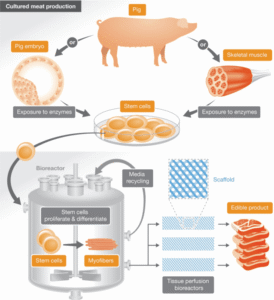
For a while, indeed, the momentum was unstoppable. Initially, Beyond Meat and Impossible Foods hit grocery stores.
Their packaging was splashed with green slogans about sustainability. Soon after, fast-food giants tested meatless Whoppers and nuggets. Consequently, the stock market soared. SEC EDGAR.
Meanwhile, commentators spoke of “the death of meat” like it were already history. In fact, some predicted traditional farms would disappear within decades. But here’s the thing about revolutions: they don’t happen just because we want them to.
Reality Hits Hard
Behind the glossy branding and Super Bowl ads, however, problems began to pile up. Specifically, lab-grown meat—or “cultivated meat” as the industry prefers—turned out to be staggeringly expensive. In fact, some early prototypes cost hundreds of thousands of dollars per pound.FDA
Even as costs fell, scaling production proved nightmarishly complex. Certainly, the science was there. However, the economics weren’t.
Meanwhile, plant-based products fared better at first. Initially, grocery shelves stocked with faux burgers and sausages sold out quickly. But once the novelty wore off, customers noticed something important. First, the price tags were still higher. Second, the taste… well, wasn’t quite the same.
As a result, sales flatlined.USDA ERS Moreover, some shoppers began to distrust the ingredient lists. They worried these “solutions” were just ultra-processed food in a new costume.
At the same time, the world didn’t pause for their experiment. Climate change accelerated. Traditional meat consumption kept rising.USDA FAS And consequently, the very companies that promised to save us quietly laid off workers. Additionally, they missed targets and burned through cash.
The Headlines Shift
 One by one, therefore, the headlines shifted tone. First: “Plant-based boom fades.”Then: “Lab meat still years away.” Finally: “Investors losing patience.”
One by one, therefore, the headlines shifted tone. First: “Plant-based boom fades.”Then: “Lab meat still years away.” Finally: “Investors losing patience.”
And then came the harshest twist: regulators. For years, companies had reassured everyone that cultured meat was right around the corner. Supposedly, it was only waiting for approval.
But governments moved slowly. Some countries embraced it cautiously. Others, however, banned it outright. Meanwhile, lobbyists for traditional meat industries fought tooth and nail.FDA
Suddenly, the revolution was trapped between red tape and ranchers.
Scientists Keep Pushing Forward
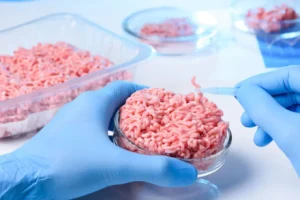
Still, in the labs, scientists pushed forward. Indeed, some admitted the hype was damaging. Specifically, they acknowledged expectations had been raised too fast and too high. Nevertheless, they kept working. They refined bioreactors. They tinkered with cell lines. And gradually, they lowered costs dollar by dollar. Because beneath the financial wreckage, there was still a stubborn truth: the idea wasn’t wrong.
After all, the meat industry really is one of the biggest drivers of deforestation. Additionally, it produces massive methane emissions and water waste. Furthermore, billions of animals live and die in conditions most of us can’t bear to look at.EPA GHG
Even if synthetic meat startups failed to conquer the market in their first wave, they opened a door. Importantly, they forced us to ask uncomfortable questions. Questions about what we eat. About why we eat it. And ultimately, about whether change is possible.
What Happened to the Startups
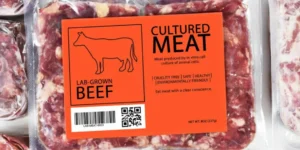
Some startups disappeared without a trace. Others rebranded or pivoted. Still others survived on smaller ambitions. But perhaps the most important thing they left behind wasn’t a burger or a chicken nugget. Instead, it was a glimpse of what food could be if we dared to imagine differently.
Because here’s the haunting part: when we strip away the hype, the need hasn’t gone anywhere. By 2050, there will be nearly ten billion of us on this planet.UN Feeding us all without breaking the Earth is the challenge of our time.
Whether synthetic meat startups play a role, or whether this was just a costly detour on the road to something else, remains unknown.
The Real Lesson
In the end, the story of synthetic meat startups feels less like a fall from grace. Rather, it feels more like a parable. Specifically, it’s about the danger of believing our own promises. Additionally, it’s about the fragility of revolutions built on venture capital.
And fundamentally, it’s about how the future isn’t a straight line. Instead, it’s a messy, stumbling path. One littered with failed experiments.
But sometimes, importantly, failure is the only way forward.
So maybe one day, a child will sit down to a dinner plate. And they’ll eat meat that never came from an animal. Perhaps it will be delicious, cheap, and ordinary.
Or maybe they’ll look back at this moment. At the billion-dollar hype. And they’ll laugh at how naïve we were.
Either way, the story isn’t over. It never is.
Because food isn’t just fuel. Rather, it’s memory, identity, and survival. And consequently, when we try to change it, we’re not just tinkering with recipes. Instead, we’re rewriting who we are.
And that’s why the rise and fall of synthetic meat startups will never really leave our tables.
Related Posts
Mt. Gox Hack: The First Great Crypto Exchange Collapse
Bitconnect Ponzi: Complete Timeline of $2.4 Billion Scam
Celsius Network bankruptcy: Why 1.7 Million Users Lost Everything


